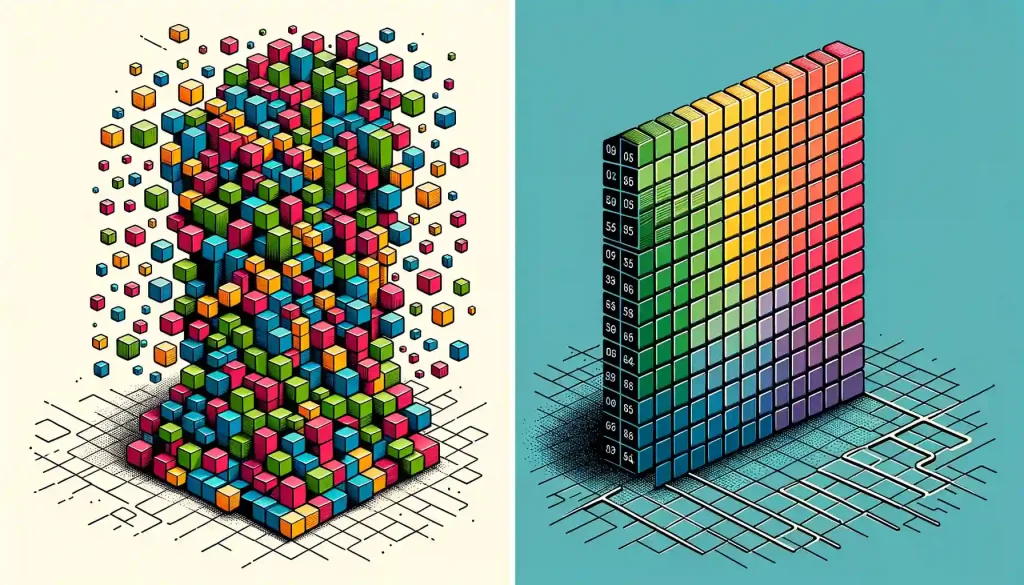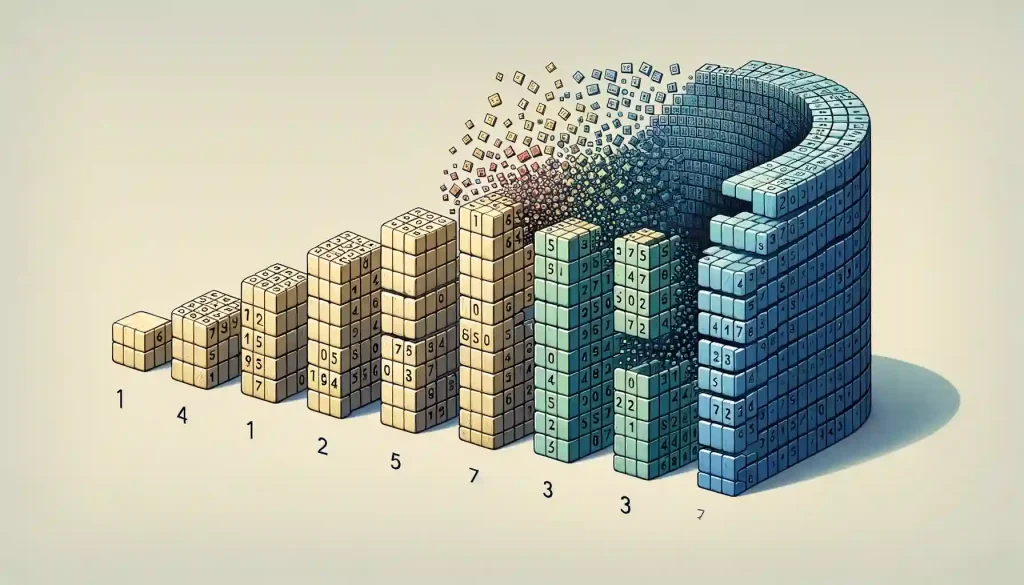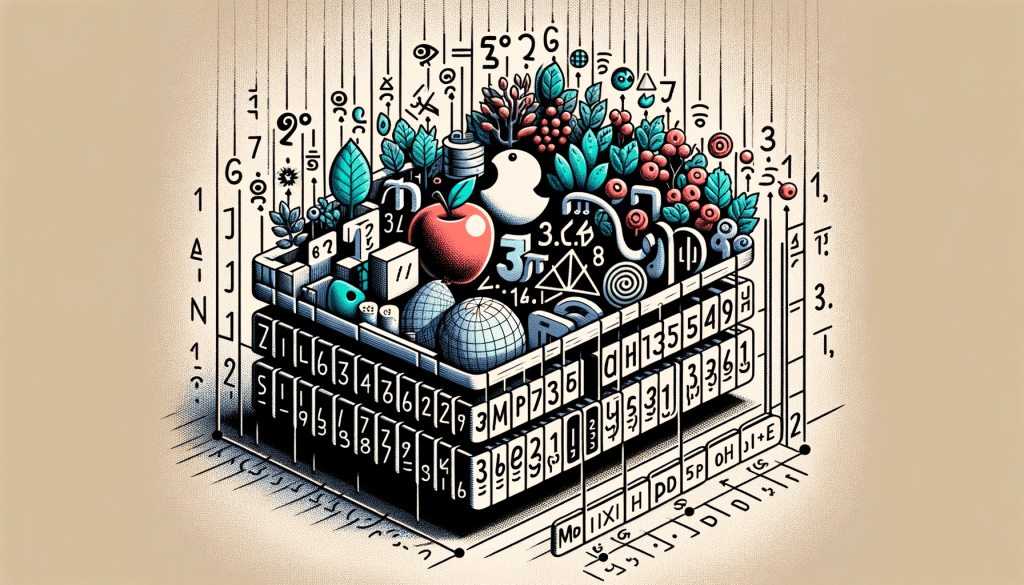As a data scientist or analyst, at times, you will need to convert a list to a dataframe in Python.
But, why bother?
Well, It’s essential for further analyzing or visualizing, period.
Converting a list to a DataFrame in Python can be efficiently done using the Pandas library, a powerhouse for data manipulation. If you have a single list, you can create a DataFrame where each list element becomes a row in the DataFrame.
First, import pandas as import pandas as pd. Then, create a DataFrame using the pd.DataFrame() constructor, passing your list as the data and specifying column names if needed.
In this article, we’ll reveal the 10 top ways to structure and analyze list data, including key steps and code snippets to do so efficiently.
Let’s get started!
Understanding List to Dataframe Conversion

Before we delve into practical methods, let’s first understand the fundamental concepts of list-to-dataframe conversion in Python.
A list is a collection of ordered and changeable data. It allows storing multiple items, which can be of mixed data types (e.g., strings, integers, and floats), within a single list structure.
Now, let’s take a look at what a dataframe is.
What is a Dataframe?
A dataframe is a 2-dimensional data structure commonly used in the Pandas library for data analysis. It resembles a table or an Excel spreadsheet with rows representing individual observations or entries.
At the same time, the columns are used to store the variables or attributes of these observations.
To convert a list to a dataframe, you need to follow the appropriate workflow and be aware of the methods available in Python for this task.
Let’s explore the process of transforming a list into a dataframe using Python’s powerful pandas library.
How To Convert A List To Dataframe In Python

Check out this step-by-step guide for converting a list to a pandas dataframe in Python.
4 Steps to Covert Lists to Dataframes in Python
Import the necessary libraries: Import the required libraries for working with lists and dataframes. Ensure that you have the necessary libraries installed in your Python environment.
Create a list: Create a Python list you want to convert into a pandas dataframe.
Use the DataFrame() function: Utilize the DataFrame() function available in pandas to convert the list into a dataframe format.
Display the resulting dataframe: After converting the list into a dataframe, display the output to view the contents of the new dataframe created from your original list.
Now, let’s explore some different methods:
1. Converting Lists of Strings

If your task involves converting a list of strings to a data frame, you can convert it into a dictionary and then pass it to the DataFrame function.
Assume you have the following list of custom column names:
column_list = ["First", "Second", "Third"]You can proceed as follows:
import pandas as pd
column_list = ["First", "Second", "Third"]
df = pd.DataFrame({col: None for col in column_list}, index=[0])Let’s now look at how to efficiently convert lists of numbers into dataframes, an essential skill for numerical data analysis.
2. Converting Lists of Numbers

Let’s say you have the following list of numerical data:
numbers_list = [1, 2, 3]You can convert this into a DataFrame using the following code:
import pandas as pd
numbers_list = [1, 2, 3]
df = pd.DataFrame(numbers_list)Handling Missing Elements
Handling these gracefully during conversion is essential when dealing with lists containing missing elements (None). You can use an empty string (“”) as a default replacement for missing elements when creating your DataFrame.
Let’s look at an example:
import pandas as pd
mixed_list = [1, None, 3]
df = pd.DataFrame(mixed_list)
df.fillna("")Handling Nested Lists
Nested or multidimensional lists are collections of lists within another list.
To convert these lists into a dataframe, you need to flatten these lists before using the DataFrame function.
import pandas as pd
nested_lists = [[1, 2], [3, 4]]
flat_list = [item for sublist in nested_lists for item in sublist]
df = pd.DataFrame(flat_list)Moving on, we’ll examine converting a list of tuples into a dataframe, expanding our data structuring capabilities.
3. How To Convert A List Of Tuples To A Dataframe In Python

If you want to convert a list of tuples to a dataframe in Python, here’s how you can do it:
You create a list of tuples.
Then, you create a DataFrame from that list.
Let’s take a look at an example:
import pandas as pd
my_list_of_tuples = [('a', 1), ('b', 2), ('c', 3)]
df = pd.DataFrame(my_list_of_tuples)Next, we dive into converting lists of dictionaries to dataframes, a crucial technique for structured data manipulation.
4. How To Convert A List Of Dictionaries To A Dataframe

To convert each dictionary into a row:
Step 1: Prepare your dictionary list.
my_dict_list = [
{'a': 1, 'b': 2},
{'a': 3, 'b': 4},
{'a': 5, 'b':6}
]Step 2: Convert your dictionary into a dataframe.
import pandas as pd
df = pd.DataFrame(my_dict_list)To convert each dictionary key-value pair into columns:
Step 1: Convert your dictionary keys into separate lists.
a = [d['a'] for d in my_dict_list]
b = [d['b'] for d in my_dict_list]Step 2: Create your final dataframe.
df_final = pd.DataFrame({'a':a,'b':b})Let’s explore the intricate process of transforming lists of lists into dataframes, a task often encountered in nested data handling.
5. How To Convert A List Of Lists To A Dataframe In Python

How to convert each list into columns:
Step 1: Prepare your list.
my_list_of_lists = [
[1, 2],
[3, 4],
[5, 6]
]Step2: Convert your list of lists into a dataframe.
import pandas as pd
df = pd.DataFrame(my_list_of_lists)To convert each list into rows:
Step 1: Create an index list using the range function.
index_list = [i for i in range(1,len(my_list_of_lists)+1)]Step 2: Convert both index and data into a dataframe.
df = pd.DataFrame(my_list_of_lists,index=index_list)Finally, we discuss advanced techniques for converting nested lists to dataframes, which are essential for complex data structures.
6. How To Convert Nested Lists To Dataframe In Python

To convert each nested list into rows:
Step 1: Flatten your nested lists.
nested_lists = [[1], [2], [3]]
flat_list = [item for sublist in nested_lists for item in sublist]Step 2: Create an index list using the range function.
Finally, let’s consolidate our understanding of the versatility and importance of list-to-dataframe conversions in Python’s data analysis landscape.
7. Converting Lists of Mixed Types

For lists that contain elements of different data types, such as integers, strings, or booleans, the conversion process remains straightforward. Here’s how you can convert a mixed-type list into a DataFrame:
import pandas as pd
mixed_list = [1, 'apple', 3.14, True]
df = pd.DataFrame(mixed_list, columns=['MixedType'])In this example, mixed_list contains an integer, a string, a float, and a boolean. When converted into a DataFrame, each list element becomes a row in the single column ‘MixedType’.
8. Converting Lists of Dates

When working with dates, converting a list of datetime objects into a DataFrame can be very useful, especially for time series analysis.
import pandas as pd
from datetime import datetime
dates_list = [datetime(2021, 1, 1), datetime(2021, 1, 2), datetime(2021, 1, 3)]
df = pd.DataFrame(dates_list, columns=['Date'])Here, dates_list is a list of datetime objects. This list is transformed into a DataFrame where each date becomes a row under the ‘Date’ column.
9. Converting a Single List into Multiple Columns

If you have a single list and want to distribute its elements across multiple columns in a DataFrame, you can reshape the list accordingly.
import pandas as pd
data_list = [1, 2, 3, 4, 5, 6]
df = pd.DataFrame([data_list[i:i + 2] for i in range(0, len(data_list), 2)], columns=['Column1', 'Column2'])A data_list is split into pairs, with each pair forming a row in the DataFrame. The resulting DataFrame has two columns, ‘Column1’ and ‘Column2’.
10. Converting a List of Dictionaries

This method is useful when you have a list of dictionaries and you want each key in the dictionary to become a separate column in the DataFrame.
dict_list = [{'Name': 'Alice', 'Age': 25}, {'Name': 'Bob', 'Age': 30}, {'Name': 'Charlie', 'Age': 35}]
df = pd.DataFrame(dict_list)The list dict_list contains dictionaries with keys ‘Name’ and ‘Age’. Each dictionary in the list becomes a row in the DataFrame, with ‘Name’ and ‘Age’ as column headers.
These methods cover various scenarios of list to data frame conversion, providing a comprehensive understanding of handling different data types in Python using pandas.
Final Thoughts

Understanding how to convert a list to a dataframe in Python can be incredibly valuable for data analysis and manipulation tasks.
Whether you’re working with numerical data, strings, or more complex data structures like nested lists or dictionaries, this skill will enable you to prepare your data for analysis efficiently.
By leveraging the power and flexibility of libraries such as pandas, you can quickly transform your lists into dataframes, giving you access to all the functionalities that come with this powerful tool.
You’ll become adept at this process with practice and experimentation and easily handle various data formats.
For the latest AI tool that simplifies Python functions, be sure to check out EnterpriseDNA’s YouTube channel.
Frequently Asked Questions
What are the basic steps to convert a list to a DataFrame in Python?
To convert a list to a DataFrame, you need to import pandas (import pandas as pd) and use the DataFrame constructor (pd.DataFrame). You can directly pass the list to the constructor for a simple list. For instance, df = pd.DataFrame(my_list) creates a DataFrame with the elements of my_list as rows.
How do I specify column names when converting a list to a DataFrame?
To specify column names, use the columns parameter in the DataFrame constructor. For example, df = pd.DataFrame(my_list, columns=[‘Column Name’]) assigns ‘Column Name’ as the column header.
Can I convert a multidimensional list to a DataFrame?
Yes, you can convert a multidimensional list to a DataFrame. Each sublist in the multidimensional list will form a row in the DataFrame. For instance, df = pd.DataFrame(multi_dimensional_list) will create a DataFrame with each sublist as a row.
What if I have multiple lists that I want to combine into a single DataFrame?
If you have multiple lists, you can combine them into a DataFrame by first converting them into a dictionary with keys as column names and values as the lists. Then, use this dictionary with the DataFrame constructor. For example, df = pd.DataFrame({‘col1’: list1, ‘col2’: list2}).
How can I ensure that the data type of each column is correct?
Pandas usually infers the data type of each column automatically. However, you can specify data types using the dtype parameter if needed. Check each column’s data type with df.dtypes and make adjustments as necessary.
Is it possible to use built-in functions for more complex data frame manipulations?
Yes, pandas come with a variety of built-in functions for data manipulation. These functions allow for complex operations like grouping, merging, filtering, etc.
How do I handle cases where my list represents rows and not columns?
If your list represents rows instead of columns, you can pass the list to the DataFrame constructor. Each element of your list will form a row in the DataFrame. Use the index parameter to specify row labels if needed.
Are there any limitations or considerations when converting lists to data frames?
When converting lists to DataFrames, ensure that all elements in the list or lists have compatible data types and structures. Also, be aware of the size of the data, as extensive lists might impact performance.
What are some common errors to look out for?
Common errors include mismatched lengths of lists when creating a DataFrame from multiple lists, incorrect data types, or trying to use incompatible data structures as input.
Where can I learn more about manipulating data with pandas?
For more comprehensive information, refer to the Panda’s documentation and explore other questions tagged with pandas, data frames, or Python in programming forums. Stay tuned to community resources and blogs for more practical examples and tips.








